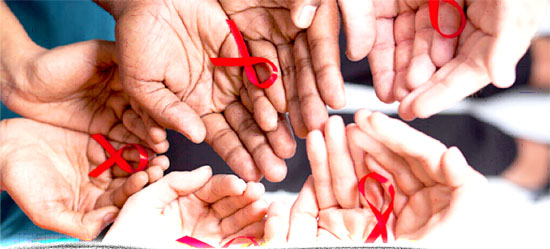
Time to see HIV and AIDS as any chronic disease to prevent stigmatisation
Do you remember the popular advertisement on HIV and AIDS on our television screens in the 90s?
If I remember correctly, it gave very scary statistics of the number of people who were to die daily from AIDS. Another advertisement also depicted people with AIDS as skeletons, while a lit candle was snuffed out to signify death, etc.
Advertisement
It simply meant if you had AIDS, there was no hope – you just died!
Years later in conversations with friends, we have wondered how true the statistics in that advertisement were – the usual comment we have all voiced out has been that if the figures in that advertisement were true, “most people would have been dead by now.”
Scary and fearful messages
The manner in which the HIV and AIDS pandemic has been presented to us since its inception has turned the disease into a “monster” - a very frightening one such that efforts to make us see HIV and AIDS as a chronic disease such as diabetes or high blood pressure, etc.
Additionally, he said the disease was classified under sexually transmitted infections and everything that was said about HIV had to do with sex.
For instance, he said the ‘ABC’ of the message of HIV and AIDS - Abstain, Be faithful and Condom use were all about sex. That, he said, gave the impression that people who were sexually active or promiscuous were those who would get infected with HIV.
Why
The fear surrounding the disease when it first emerged – the fact that having the disease meant you would die and also that those who had the disease were either promiscuous, unfaithful, ‘sinners’ or morally corrupt — led to a
Anyone who had the disease was looked at in a “different” manner and isolated. Additionally, the lack of knowledge and inaccurate information on how the disease is contracted and transmitted increased the discrimination and
The UNAIDS and the World Health Organisation (WHO) point to the fact that the fear of stigma and discrimination are the main reasons why people are unwilling to get tested, disclose their HIV status and take anti-retroviral drugs (ARVs).
According to health experts, when people are reluctant to undergo an HIV test, it leads to more people being diagnosed late and the virus by then may have progressed to AIDS. When people are unwilling to take an HIV test, then more people are diagnosed late, when the virus may have already progressed to AIDS.
This, according to health experts, makes treatment less effective, increasing the likelihood of transmitting HIV to others and causing early death.
‘It’s only my husband who knows my HIV status’
A 38-year-old mother of three said when she got to know that she was HIV positive, it was a difficult situation for her and she cried every day. But now, with the medicines that she is taking, she is able to manage the disease and does not dwell too much on it.
Although she has lived with the disease for the past 14 years, she said it was only her husband who knew that she had the disease because of the stigma.
Her first son, who is 14 years, is also HIV positive, a situation which still worries her. Her husband and her other two children do not have the disease.
She believes that the earlier messages and advertisements and HIV and AIDS contributed to how people look at people living with the disease. She said it was important for those in charge to design new messages about the disease and let people know that the disease could be managed and those living with it could lead normal lives.
“I’m willing to volunteer to be used in any advertisement so that people will know that living with AIDS does not mean you are condemned to death. I look very normal,” she stated.
In separate interviews with a
“I have some marks on my legs because of the disease and people make fun of me because of that. They tell me my legs are not attractive. This makes me sad, but I cannot tell them I have the disease,” said the
“It is only my mother and grandmother who know I have the disease. Sometimes, I hear people saying negative things about the disease and I just keep quiet,” said the
HIV and AIDS just like any chronic disease?
Unlike the past, when there were no medications for the disease,
For instance, he said anti-retroviral therapy (ART) had
“Now we also have what we call Treatment as Prevention (TaSP) where people living with the disease are put on medication that prevents them from spreading the infection and so it reduces the number of people who are getting infected each day
He said the good news was that last year, seven
HIV and AIDS, chronic disease
According to
It would also help achieve the 90-90-90 concept which stipulates that by 2020, 90
“HIV is not transmitted by touching, holding hands or eating from the same bowl. These are things we have been talking about over and over again but we need to stress it and intensify our education,” he said
Writer’s email: [email protected]



